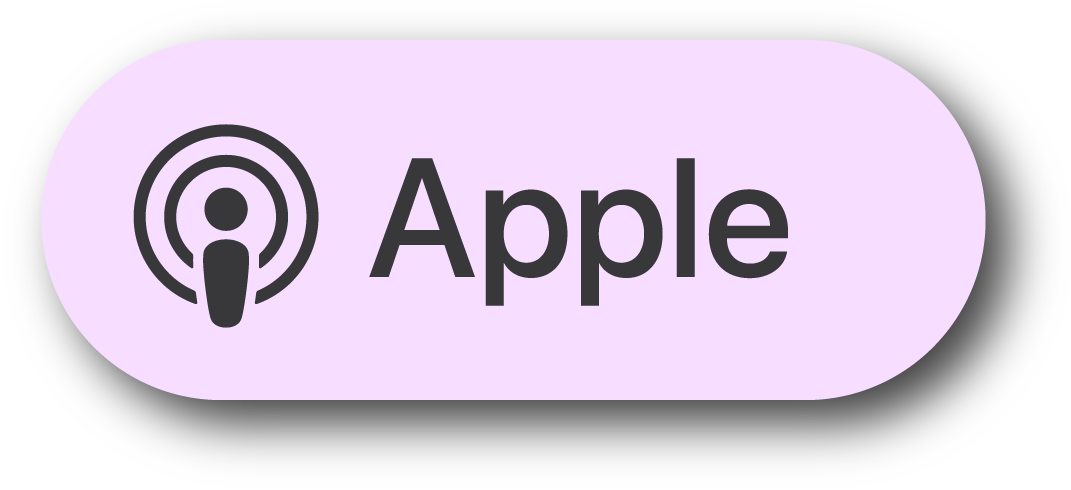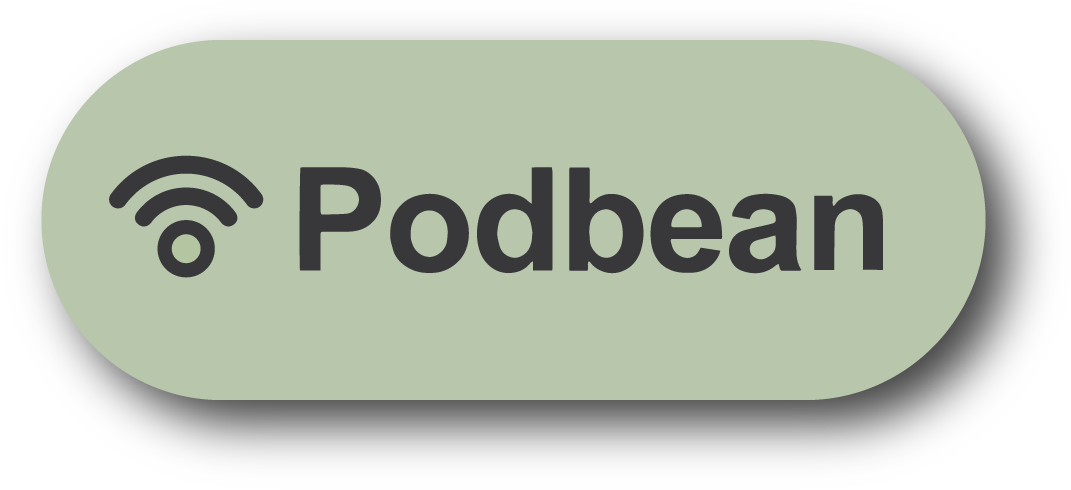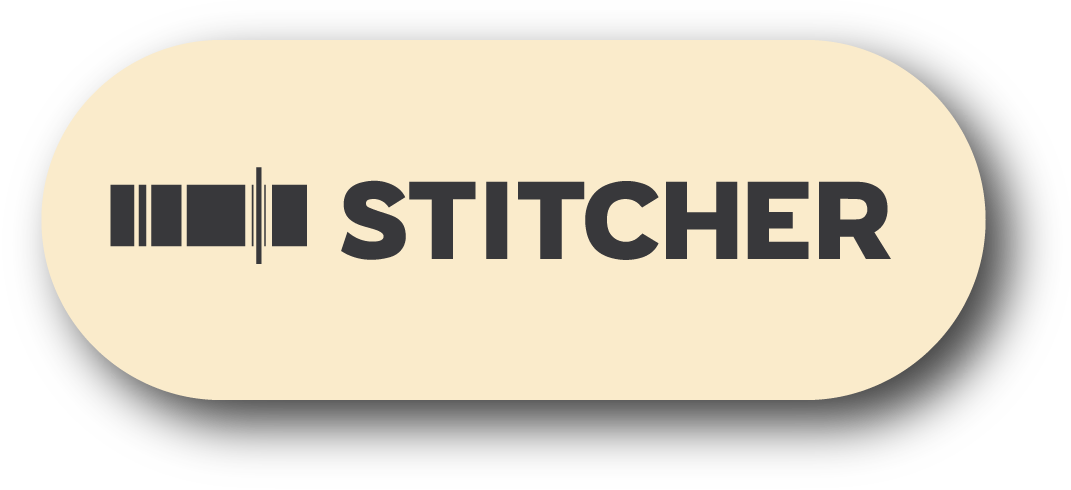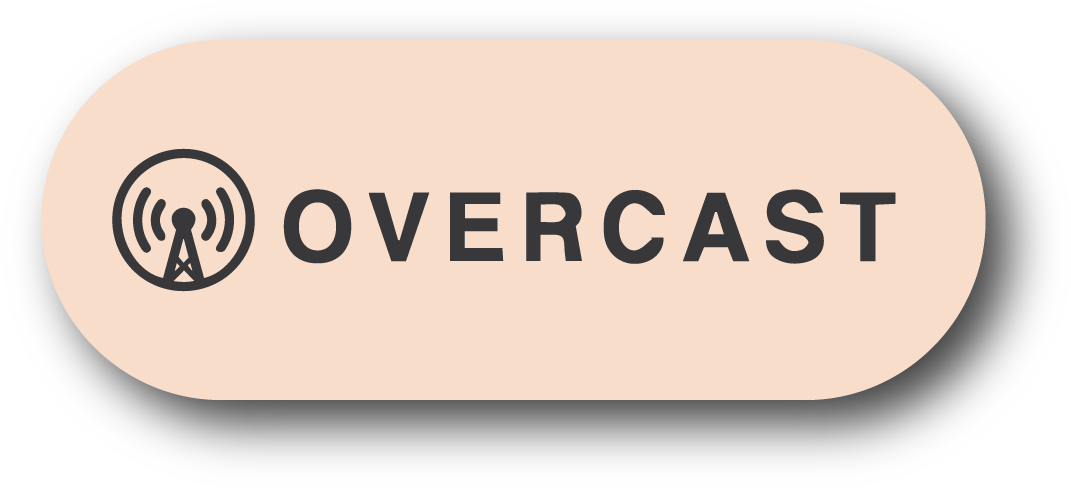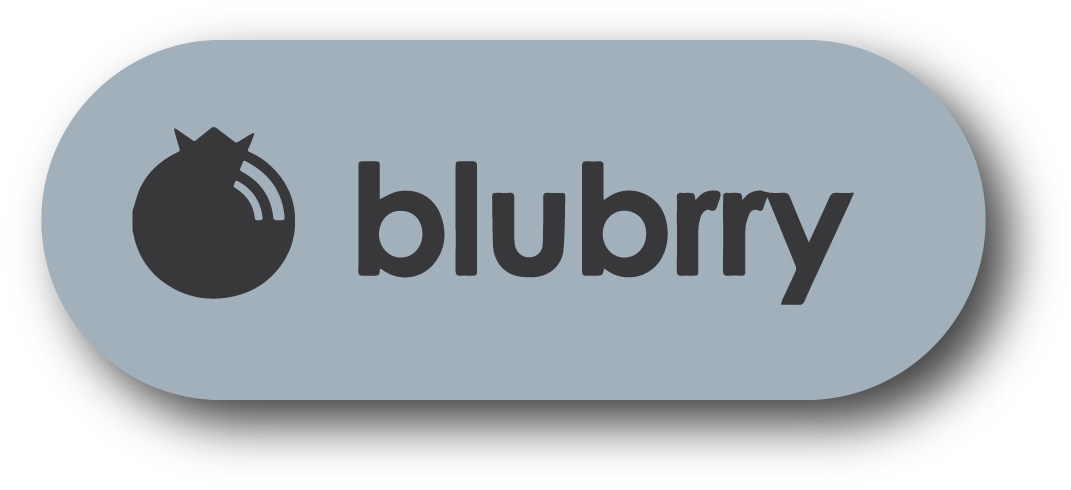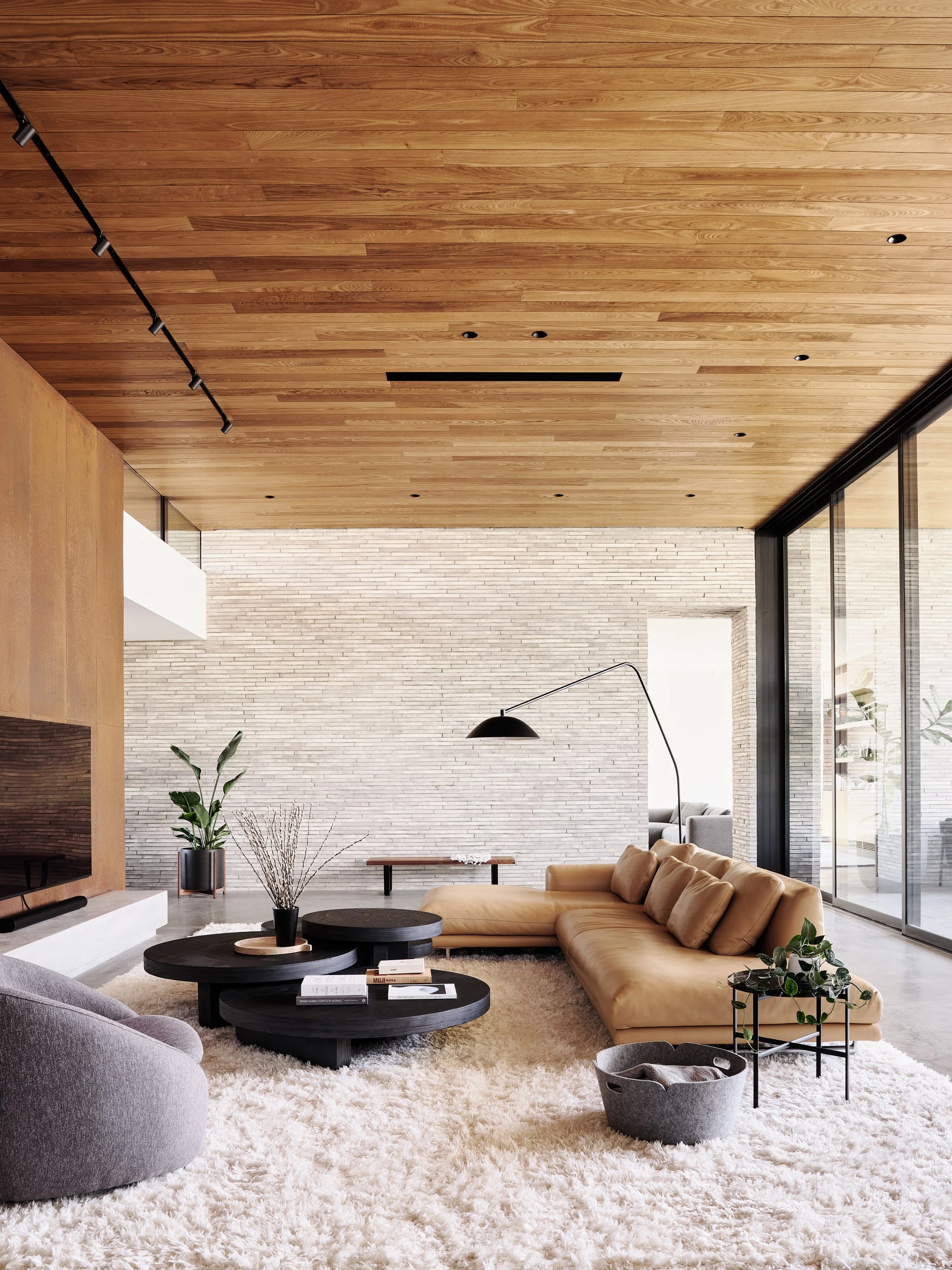#444 - MORRIS ADJMI, Founder and Principal of Morris Adjmi Architects
SUMMARY
This week David and Marina of FAME Architecture & Design are joined by Morris Adjmi, founder and principal of Morris Adjmi Architects. The three discussed Morris’s childhood, architecture education and experiences; modern & historical architecture expressions; early career and working with Aldo Rossi; the Scholastic Building; Morris Adjmi office founding & operations; analog vs digital in architecture; and more. Enjoy!
ABOUT MORRIS
As the founder and principal of MA, Morris Adjmi, FAIA is dedicated to understanding the history and complex forces that shape cities to create buildings that are contextual but unmistakably contemporary. Adjmi’s passion for contextual architecture was formed by the cast-iron French Quarter balconies and crumbling Creole cottages in his hometown of New Orleans and refined in New York and Milan during a 13-year collaboration with Pritzker Prize-winning architect, Aldo Rossi.
Morris established MA in 1997 following his collaboration with Rossi, and on that strong foundation, built a multidisciplinary design practice known for its thoughtful engagement with history, distinct interpretation of industrial forms, and creative expression of innovative materials. The resulting work has become a favorite of both forward-thinking developers and history-minded preservationists.
TIMESTAMPS
(00:00) Morris' childhood & early education.
(06:29) Architecture education & experiences.
“Architecture is a great entry point if you're concerned about the environment, sustainability, or any of those issues. Through architecture, you can really make a difference by providing housing or helping to reduce our fossil fuel consumption. That is different from the idea of architects just creating beautiful things, which obviously we want to do as well.” (10:55)
(13:01) Institute for Architecture & Urban Studies.
(23:19) Continuity of modern & historical architecture.
“Every building wants to be the star and shout as loud as it can for attention. I think great cities are made of great buildings that can be background buildings. It doesn't mean that every building should be a background building, but there needs to be a balance and one where buildings can contribute to the overall average, but not necessarily overpower each other and vying for attention.” (25:27)
(30:51) Expressing architecture through primary elements.
(31:55) Scholastic Building.
“We changed the entire façade [of the Scholastic building], and it was approved on the same day we presented it at the hearing, which is not typical. It was a ten-story building that was filling a gap tooth between two very tall buildings. Those are the kinds of things that you learn working with a master that cannot be taught. The idea is that it's never too late to do the right thing, to do the right thing when you know something's not right, and to not accept mediocrity and really work to realize vision. I learned a tremendous amount from Aldo Rossi about architecture, certainly, but the most valuable lessons I learned from him were really about conviction, dealing with difficult situations or clients, and really sticking to your convictions.” (37:43)
(38:52) Early Career & Working with Aldo Rossi.
(44:13) Morris Adjmi office founding & operations.
(53:20) Analogue vs digital in architecture.
“Clients and the general public are much more connected to hand drawings or sketches than super photo-realistic renderings because I think the craft shows in a drawing. I think it depends on the client or the point of the presentation, but a lot of times you can show a sketch, watercolor, or whatever, and that evokes more of a feeling, a mood, and a direction than something that's totally worked out. It takes so much more time to get renderings right, and you can't get it right early.” (56:23)
(59:19) Projects that Morris would like to do.
(01:04:39) Translating design philosophy throughout the office.
(01:09:02) Morris' favorite building.
HAVE QUESTIONS OR SUGGESTIONS?
TEXT/CALL OUR HOTLINE
213-222-6950
#442 - JASON SOMERS & STEVEN SOMERS, President & CEO of Crest Real Estate
SUMMARY
This week David and Marina of FAME Architecture & Design are joined by Jason Somers and Steven Somers, President and CEO of Crest Real Estate. They discussed the process of wildfire home rebuild; qualifying rebuild regulations in LA; the site clearing process; building like-for-like; recreating neighborhood with unique character; fire-resistant home design; the Case Study 2.0 program; and more. Enjoy!
TIMESTAMPS
(00:00) Crest Real Estate resources for wildfire rebuild.
(07:17) Process of wildfire home rebuild.
“It’s important to plan aggressively before the start of each project phase. It's unbelievable how often clients will rush ahead and then end up losing time from something that was missed, because there wasn't proper planning upfront. So, before the architect puts pen to paper, figuring out what is the zoning and building regulations enables you to design once and get it right from the outset. It's critical to do the due diligence upfront because if you then get into the plan check process and things were missed, there will be design changes that cost money and time.” (14:53)
(17:53) LA qualifying rebuild regulations.
“The most important thing to note in the mayor's original executive order regarding the rebuilding process [in the city of Los Angeles] is that she made it very clear that all fire rebuilds, regardless of whether you are under 110% or over 110%, will go through an expedited plan check review process. So regardless of the 110% threshold, if you are a fire rebuild project, you will get an expedited plan check review with the City of Los Angeles.” (21:20)
(31:22) Site clearing process.
(38:42) Building like for like.
“If you had a set of plans for a house that was built not that long ago and you want to rebuild the same thing, feel free to reuse that set of plans to build like for like. But generally, if you're staying under the 110% threshold, it's about the massing and staying within the bulk, volume, height, and location of the building. But you can change the style, the floor plans, the finishes, all of that completely. It can look like a completely different house. And if you're going above 110%, which is not such a big deal, you really don't have to worry about like for like at all.” (39:05)
(42:38) Recreating neighborhood with unique character.
“The key is variety. If you're going down the different blocks in these neighborhoods, it doesn't feel like a truly pre-planned track development with houses that are replicas of each other. There were some beautiful houses and there were some average houses, but it was part of a fabric of a community that evolved over time with different products that were out there. So, I think the key is having a variety of prefab, large-scale construction companies and individual homeowners to rebuild the neighborhood together. It really is all these things coming together to recreate a neighborhood with unique character overnight, which is not an easy thing to do.” (45:34)
(46:42) Fire resistant home design.
“They could have been foresight from the state and insurance companies to prevent a lot of [the wildfire spread]. There are certain houses that had fire hardened materials, exterior sprinkler systems, and vent covers that are existing amongst chaos and destruction all around them. The fires can still happen, but you need to make sure that it doesn't happen from the embers getting inside the house. We already spend all this money on improving the city, so it'd be nice to make exterior sprinkler systems and other fire prevention mechanisms a requirement.” (48:47)
(54:18) Case Study 2.0 program.
(01:04:48) Submitting to the Case Study 2.0 program.
“We've got this crisis of great architecture costing an exorbitant amount of money and limiting great architecture to such an elite few is a big problem. So, we've tasked these architects throughout the country and the world to create a prototype house that has efficiencies and replication ability to create scalability. The architects are working together to come up with ideas of things that can be utilized across all the different projects and design. The more people that get involved to implement these projects, the more scalability and efficient we can be in solving for factors like cost efficiency, fire hardening, health and wellness.” (56:07)
HAVE QUESTIONS OR SUGGESTIONS?
TEXT/CALL OUR HOTLINE
213-222-6950
#440 - CHRISTINE WILLIAMSON, AIA, Assistant Professor of Architecture, Virginia Tech
SUMMARY
This week David and Marina of FAME Architecture & Design are joined by Christine Williamson, AIA, Assistant Professor of Architecture, Virginia Tech. The three discussed Christine’s career in building science; what building science is; architecture consultant cases; identifying issues in buildings; fire-resilient roof design strategies; building code and fire-resistant design; retrofit fire prevention strategies; benefits of non-ventilated roof systems; Acelab & building materials; tradeoffs in design; and more. Enjoy!
ABOUT CHRISTINE
Christine Williamson’s professional experience includes building-science consulting for the restoration of Belvedere Castle in New York City’s Central Park, forensic investigations of building failures at the air-traffic control tower of LAX, and the Wheeler Opera House in Aspen, among other projects. She offers new-construction risk-mitigation consulting for residential towers, mid-rise mixed-use buildings, and production homes, as well as some of the most extraordinary private residences in the world. She has worked across North America from the Canadian Arctic to the Caribbean.
TIMESTAMPS
(00:00) Christine's Early Career.
(04:56) What is building science?
“The less you know, the more conservative you have to be with your designs. The more you know about the building science and context for understanding risks, the bolder you can be with your designs and depart from what you did previously.” (11:20)
(12:31) Christine’s client types.
(16:13) Architecture consultant cases.
(31:02) Identifying issues in buildings.
(33:48) Fire-resilient home design.
“There's one big misconception that to make our homes and buildings more resilient to fires, we can't build with materials that can burn. That is not true. We're quite good at using materials that can burn by themselves in ways that are resistant to these types of weather events.” (37:07)
(38:00) Fire-resistant roof design strategies.
“To deal with condensation issues in unvented roofs, we can] add a diffusion port at the apex of the roof where the ridge vent would be. Instead of using wood sheathing for the whole part of the roof, we cut out the sheathing at the roof apex and replaced it with something that's vapor-open and permits moisture to escape. We'll cut out a small portion of the wood and wrap it with building paper, like Tyvek. Now, we can insulate using moisture-sensitive insulation and permit drying to happen just at the apex without venting the whole roof. This is unbelievably helpful without the added cost of other alternatives.” (49:40)
(54:32) Building code and fire-resistant design.
(59:36) Retrofit fire prevention strategies.
(01:01:20) Benefits to a non-vented roof system.
“When the mechanical system is in the attic and the ducts leak, what happens is a certain amount of air is taken from the house to convert into cool air, but we don't put all that air back into the house because we lose some of it to the attic. If we take out more than we put back, negative pressure will be created in the house. So, more air will have to come in from the outside through defects in the building enclosure to replace the air that’s leaked into the attic. The uncontrolled outside air brings things like dust, smoke, and moisture, which could cause mold and health issues.” (01:03:23)
“Typically, it’s way better to condition the attics because it allows us to control the interior environment better. Sometimes people think, “I don't need to control things, man, I'm cool.” But it means that you can have a healthier environment by bringing in fresh, filtered air from a location you know about, rather than allowing polluted air to come in from who the heck knows where.” (01:04:47)
(01:07:56) Acelab, building materials, and fire resiliency.
(01:14:35) Tradeoffs in design.
“I tell people to hire an architect because you don't know what you don't know. You can have somebody who understands buildings professionally to be your advocate and help you make the best use of your resources. Architects can help you determine if something is worth investing in and reducing the house size to compensate, or if something is not important to you, they can reallocate that resource somewhere else. I think the people who have this idea that they have to negotiate against the professionals they hire miss out on the most important thing their architect and contractor can do for them, which is to get them more of what they want for less.” (01:21:11)
HAVE QUESTIONS OR SUGGESTIONS?
TEXT/CALL OUR HOTLINE
213-222-6950
#436 - WALTER HOOD, Creative Director & Founder of HOOD Design Studio
SUMMARY
This week David and Marina of FAME Architecture & Design are joined by Walter Hood, Creative Director & Founder of HOOD Design Studio. The three discussed Walter’s childhood and education; architecture and landscape architecture differences; experimenting with different career paths & evolution; Hood Design Studio practice; the influence of art education on landscape design career; embracing change and imperfection; architecture service in landscape firm; establishing culture and project consistency in a firm; artist vs architect; and more. Enjoy!
ABOUT WALTER
Walter Hood, a multidisciplinary designer from Charlotte, NC, is globally recognized for his contributions in art, landscape architecture, urbanism, and research. Founding Hood Design Studio in Oakland, CA in 1992, he now leads as its creative director. His passion for landscape and urbanism emerges from its broad, democratic scope, allowing experiences beyond architectural constraints. Infusing African American cultural arts into his philosophy, he established a unique voice, reshaping spaces to reflect contemporary needs without erasing their history. A professor at UC Berkeley and former Harvard educator, Walter penned “Black Landscapes Matter” and has received accolades like the 2019 MacArthur Fellowship, the 2021 Architectural League’s President’s Medal award, 2023 WSJ Magazine Innovator in Design award, and the Vincent Scully Prize in 2024.
TIMESTAMPS
(00:00) Walter's Studio.
(03:03) Walter's childhood & education.
(13:13) Difference in studying architecture and landscape architecture.
“Architecture was more rigorous in the precision of the making and more interested in the speculative ideas in design. Whereas landscape, particularly in Berkeley, was highly steeped in the sciences. Whether it's social sciences or natural sciences. This subjectivity didn't exist in the realm of landscape architecture as it did in architecture.” (16:27)
(19:00) Experimenting with different paths in early career.
“In the early part of my career, I tried everything. I didn't say, “This is what I want to do.” My students are very much, “I want to do this.” But I question them, “How do you know you want to do that?” I remember in Philadelphia, I left this landscape firm that I had been with for three and a half years, and then I immediately started working in an architecture firm. [My friends were perplexed as to why I would leave the landscape firm. It’s because I got bored.] Because of all these varied experiences, by the time I got into school, [I thought the career exploration] could wait. I knew that the diversity in the profession will always be there.” (19:19)
(20:52) Career as an evolving project.
“Starting in the 90s, it was on the back of the post-modern movement. All those [architects and designers who are really successful now, such as Zaha Hadid,] were making paper architecture then. They didn't have projects, so they used design research as a way to figure out what their practice would be. Then, when that first commission happened, they already knew what to make and how to make it and just furthered those things. I think that's what many young designers don't see today. It took years to build the foundation for the firm. You had this culture, which I think has been abandoned to a certain degree. People think they just need to win [a prestigious design competition and then they will blow up versus thinking about how they want to practice.] There should be a period of cultivation in some way so that when you do get the project, there's a clarity to the work.” (27:19)
(28:48) Ease of access to information.
(31:46) When Walter started his practice.
(36:22) Influence of art education on landscape design career.
“Make a decision, then see what you get. We're constantly fiddling to the last minute in architecture and landscape architecture. Compared to when making a piece of art, you make a decision, and you just do it. It's revelatory. I worked on ten paintings for a show last year and it was the first time I've ever done paintings. A guy was coming to pick the paintings up on Monday. It was the Friday before and my paint needed to dry so I had to stop. In architecture, after the building is completed, you go there with a checklist of things to fix. Five years later, you’re still going back and trying to fix things. In art, once the work goes, it's gone. It's done. There's a beauty to that and it's really hard to get that to happen in the studio because everybody's constantly trying to get it right. That idea of getting it right is a little bit too much.” (36:55)
(38:39) Embracing change and imperfection.
“We should be thinking about how people should be living today. It is not, “We need more social housing. We need more of this...” But we should be thinking about [how we should live in a constantly evolving world]. You don't see people discussing, “Maybe we should be living more collectively. Maybe we should live on smaller footprints, more individually, etc.” Even in landscape design, I'm less interested in form now. I'm more interested in the question, “How can I create this thing that people can go into versus something people look at?” It's almost like we're not teaching that anymore as ways to begin a design. Just these very simple logics of how we exist in space. Instead, we are defaulting that we have to live in this Cartesian world.” (44:03)
(50:02) Adding architecture service to landscape firm.
(53:29) Walter's firm.
(01:01:53) Artist vs Architect.
HAVE QUESTIONS OR SUGGESTIONS?
TEXT/CALL OUR HOTLINE
213-222-6950
#434 - MATT RISINGER, Founder of the Build Show
SUMMARY
This week David and Marina of FAME Architecture & Design are joined by Matt Risinger, Founder of the Build Show, and CEO & Chief Builder at Risinger Build. The three discussed the LA Wildfires; disaster prevention strategies; new construction materials; how mat became a builder; hiring good builders; the importance of a stable home; convincing clients to try new products; getting better at sales; the Build Show & Risinger Build’s evolution; project NDA; and more. Enjoy!
ABOUT MATT
Matt started learning about construction by working summers working on houses for elderly people who owned their homes but couldn’t afford to maintain them. He got a BS in Industrial Management from Grove City College and worked for one of the National Production Builders (NVR Ryan Homes) in DC after college. His 7 years with that mega builder was fun, but the fast-paced building it did not satisfy his desire for “Craftsmanship” and Building Science. Matt’s passion for building science led him to create a Building Better blog and start positing educational YouTube videos short videos.
With the increasing popularity of his videos, Matt launched Build Productions in 2018 is now approaching 1M followers across his social channels. Build Productions’ expert network continues to grow along with the audience.
TIMESTAMPS
(00:00) Texas & LA Wildfires.
(04:32) Houses that survived the Los Angeles fires.
(07:03) Disaster prevention.
“If a client sells their house after two years, builders are still on the hook for at least another ten years legally for the house. The house could be 10 years old with three owners, but if there's a problem, they don’t have a previous relationship with us. If they think, “Oh, this builder is absolutely horrible. I'm going to sue them.” I'm hosed. I'm in trouble. We need to make sure that clients are doing the best thing for the house, which is the right thing for them and is consequently, the right thing for you as the architect and the builder. When it comes to health, durability, longevity, and resilience, those things need to be baked into the process no matter what we build.” (08:16)
(09:33) Fire Rated Plywood.
(14:20) New construction products & Fire Prevention Strategy.
“The very wise architect [who built the house that survived the Palisades Fire] decided to use unventilated metal roofs without overhangs, a combination of stucco for the walls, and a wood-looking fiber cement on the front of the house. The concrete fence was also [a wise decision]. A perimeter fencing that stops embers is a big deal for people who have a fire next door. If you can stop those ambers from coming through your fence when the wind is blowing, whether it's by putting a metal fence that has an ember screening or going to the expense of a concrete fence, that's really going to help prevent your property from igniting.” (20:03)
(22:48) How Matt became a builder.
“The national mold crisis is what really drove me to realize we need to pay attention to how we build houses. If we just build them without thinking and there are leaks in a modern house, those leaks turn into mold, rot, and other problems. People who spend $250,000 on their dream homes suddenly start living in nightmares. They're looking at me as the builder like, “You crushed my dreams. You're the worst person ever. We're going to sue the pants off you.” So here I am, this 30-year-old builder who loved my job six months ago, and now all these people hate me and think I'm the worst person in the world because their kids are going to die of mold poisoning. I just can't build the way we've always built. I need to figure out what it is that makes a well-built house a healthy house, a house that's not going to have problems or molds.” (28:49)
(31:32) Hiring good builders.
“How do you find a good builder? I really think that homeowners and architects really need to visit job sites under construction. It's really hard to evaluate based on pretty pictures, whether the builder is good or not. By visiting sites under construction, that's where you can really see their quality. We need to be better at interviewing and doing our own research. I think it's interesting how over the years, people have stopped calling for reference checks. For anybody who's thinking about hiring builders, you want to get a reference from three people within the last 1 to 2 years that build a house with them. Get the customer’s numbers and ask for their experience. If there are at least three excellent experiences, then you know the builders are reliable.” (34:48)
(39:23) Builders repeating designs.
(44:44) LA Fires & Importance of a stable home.
(47:57) Convincing clients to try new products.
“We're not going to sell a Passive House by telling people that you're going to save the whales. We're going to sell passive houses because people want a comfortable, resilient, durable, and well-built house that has healthy air for their children. That's why they're going to buy a passive house. So, we need to bring the rubber to the road where it really matters and talk about the things that matter to the clients. Part of that is also figuring out what does matter for them and sometimes it may not matter to them until you ask them.” (53:28)
(55:43) Communicating with clients & getting better at sales.
“Builders and architects both need to be better at sales. A big part of being a good salesperson is being a good listener and really understanding what people are saying, what motivates them, and what drives them. I think that in the building industry, we get caught up in this, “What's it going to cost to build?” And that's the only thing we hear. As a result, we start competing on price and it's a race to the bottom. We need to get rid of that race to the bottom mentality and go right to what's important to the client as a homeowner and really listen. Then frankly, we should utilize some good sales skills to secure the project.” (56:54)
(58:38) Success of the Build Show.
(01:05:43) Design build & Project NDA.
(01:12:35) The Build Show & Risinger Build evolution.
(01:19:47) Matt's favorite buildings.
HAVE QUESTIONS OR SUGGESTIONS?
TEXT/CALL OUR HOTLINE
213-222-6950
#432 - JOHN MARX, Founding Design Principal & Chief Artistic Officer of Form4 Architecture
SUMMARY
This week David and Marina of FAME Architecture & Design are joined by John Marx, AIA, founding design principal and Chief Artistic Officer of Form4 Architecture. The three discussed John’s childhood and early career; architect’s relevance in society; gender in architecture; logical thinking, empathy & humanity; loveable architecture; teaching & learning beautiful architecture; AI and architecture; and more. Enjoy!
ABOUT JOHN
John grew up in the Midwest and evolved from studying fine arts into architecture. He co-founded Form4 in SF in 1998. The firm won 2017 American Prize for Architecture and is best known for designing tech spaces for many of Silicon Valley’s big names.
John continues to paint and write poetry, which he feels elevates his architectural design sensibilities (you might have a copy of his Etudes book). He’s a long-time Burner whose most recent installation, Museum of No Spectators, was exhibited at Burning Man the past two years. John is a multi-time exhibitor at the Venice Biennale. He lectured at Berkeley in the early 2020s on designing for cyberspace, predating the Metaverse label, and recently published a series on the topic and AI in Arch Daily. John’s most recent book, Towards Abundance, discusses gender roles and identities.
TIMESTAMPS
(00:00) John's childhood.
(11:06) Early career.
(13:48) Architecture profession relevance in society.
(19:08) Gender in Architecture.
“One of the greatest curses or insults in architecture appears to be confessing that something's arbitrary. But I think that's the sweet spot. It's the quirky, arbitrary aspects of architecture that people love [and remember]. Linear, logical, verbal. That thought process is not going to permit you to do something expressive, creative, quirky, and human. It’s the multidimensional, intuitive visual creative process that opens that door.” (27:25)
(29:13) What's the world we want to live in?
“They [some architects] say, “We're problem solvers. We look at things rationally and objectively. This subjective thing that you're introducing here is inappropriate for modern architecture. Why are you talking about superficiality like the word beauty, when the world is on fire, and we have climate change issues? We need to talk about carbon, carbon, carbon.” My response to that is: “The most sustainable things in life are those things you will not throw away because you love them too much.” That reintroduces the word love.” (31:18)
(38:25) When did architecture shift to logical thinking?
“International style modernism, which was the basis of minimalism, is a reductive process. When I look at the reductive process, I think, “Okay, well, that's fine. Get to the essence of architecture.” But there's a certain point where every time you go through a layer of reduction and remove something, you're taking humanity out of the design. You get this machine that in the end, is an acquired taste. It's either poetic or it's really boring. Unfortunately, the problem is that not many architects are talented enough to design poetic minimalism. It's really hard.” (40:49)
(46:38) Loveable architecture.
(51:23) Teaching & learning beautiful architecture.
(56:06) Architecture shifts between logic and empathy.
(01:05:20) How to teach beauty.
(01:08:06) AI and Architecture.
“Are we moving towards the way I'm advocating for, which is design from the heart; or are we going to give it all up and let A.I. do it? My fear is we're going to give it all up and let A.I. do it because we've abandoned the heart already. A.I. is not going to steal your job as a designer. You've already given it up by not creating emotionally resonant designs for people, which it has no problem doing. A.I. loves to pander to the population, which architects refuse to do. If you tell it to make things lovable, it'll go there. It won’t say, “We don't do lovable in architecture.” (01:11:22)
(01:13:13) John's favorite building.
HAVE QUESTIONS OR SUGGESTIONS?
TEXT/CALL OUR HOTLINE
213-222-6950
#430 - SARA BRONIN, Professor of Cornell University and Author of Key to the City
SUMMARY
This week David and Marina of FAME Architecture & Design are joined by Sara Bronin, Professor of Cornell University; Founder of National Zoning Atlas; and Author of Key to the City: How Zoning Shapes Our World; the three discussed Sara’s childhood & education; her early career; Key to the City book; legalities and authorities of zoning codes; negative effects of zoning codes; National Zoning Atlas; improving zoning regulations; architecture education’s impact on zoning perspective; affordable housing and gentrification; and more. Enjoy!
ABOUT SARA
Sara C. Bronin is a Mexican-American architect, attorney, Cornell University professor, and policymaker whose interdisciplinary work focuses on how law and policy can foster more equitable, sustainable, well-designed, and connected places. She is the author of Key to the City: How Zoning Shapes Our World, and she founded and directs the National Zoning Atlas, which aims to digitize, demystify, and democratize information about zoning in the United States.
Bronin is one of the foremost American scholars in property, land use, zoning, and historic preservation law, having co-authored two treatises, four books, and dozens of articles. She has been a reformer and change-maker in public roles at the local, state, and federal levels. She holds a J.D. from Yale Law School (Harry S Truman Scholarship), M.Sc. from the University of Oxford (Rhodes Scholarship), and B.Architecture and B.A. in Plan II from the University of Texas. A seventh-generation Texan, Sara is a native Houstonian.
TIMESTAMPS
(00:00) Sara's childhood home & education.
(06:41) Why Sara studied law.
(08:47) Early career.
(12:12) Zoning codes and ‘Key to The City’.
“Zoning codes are written in a totally inaccessible way. The zoning codes are 150 pages long and filled with jargon. They are inconsistent internally, so there might be cross-references that don't make sense or definitions that contradict each other. Overall, they're not written so people can understand and engage with them. They're written like any dense legal text that’s only for experts to access. I think that's why people feel disconnected or not even interested in zoning codes. Once you open your town’s zoning code and there are 230 pages with 50 chapters, you’ll be like, ‘Forget it.’ So what I'm trying to do in the book [Key to the City] is to try and show the key ideas, the words people might look for, and trying to give people an entry point to engage with their city’s codes.” (14:17)
(17:25) How the zoning codes are written and decided.
(19:04) Negative effects of zoning codes.
(22:06) Who should oversee zoning regulation approvals?
“The only way to make changes in your community is to raise your hand and be there in the trenches. The interesting thing happening in communities around the country [US] is that it’s shifting away from largely exclusionary zoning. For example, zoning regulations with minimum lot sizes and single-family requirements have been designed to exclude people. You're seeing the ‘Yes in my backyard’ movement. For the first time, people are showing up to testify in favor of new housing, promoting bike infrastructure, or other provisions that might make a code more environmentally sustainable. It starts with the one person or a couple of people that are showing up at the meetings, raising their hands, writing the blog posts, encouraging their friends to show up, and keeping that momentum going.” (22:57)
(26:26) National Zoning Atlas.
“A third of the codes reviewed by the zoning code and geospatial partnership had discrepancies between the map and the text. We've always identified extinct districts or districts that used to exist in the text and then got erased but they are still on the map. We've also always logged unmapped districts or things that are in the text but aren't mapped. But what we haven't logged was serious discrepancies. For example, the districts on the code are named ‘Commercial One, Commercial Two, and Commercial Three,’ but the only thing you see on the map is ‘Commercial District.’ So, what's one, two, and three? What rules apply? [It’s a serious problem when there’s no correlation between the map and the code.] That can cause serious legal issues. People think, “Oh, zoning, we can't touch it. It's sacred.” But it's not that sacred and it can also be wrong.” (31:37)
(34:25) Zoning codes increasing complexity.
(40:44) Improving zoning regulations.
(44:02) Architecture education’s impact on zoning perspective.
(47:17) Implementing elusive qualities of delight and beauty.
“There is no substitution for architectural and aesthetic education. We should have that in our schools so that everybody can benefit from a more educated populace in art, just like how we educate for science and math. Architecture and design are all fundamental things that we should know about and have some training or understanding of, and we don't.” (47:48)
(50:33) Positive changes to zoning codes.
(54:30) Zoning code effect on affordable housing and gentrification.
“The best way to keep housing affordable is to create more. The research shows that across the board, anybody who says otherwise is not factually correct. In New York City, there has been a huge amount of new housing constructed. Without that new development, you would have more pressures in other neighborhoods and rents would have risen or house prices would have risen faster than if you did not have those homes to relieve some of the pressure. So, in general, a zoning code that allows more housing will be a zoning code that allows a more affordable city.” (55:12)
(57:42) Sara's favorite city.
HAVE QUESTIONS OR SUGGESTIONS?
TEXT/CALL OUR HOTLINE
213-222-6950
#428 - GEORGINA WILSON, Founder & Principal of Georgina Wilson Associates
SUMMARY
This week David and Marina of FAME Architecture & Design Georgina Wilson, Founder and Principal of Georgina Wilson Associates. The three discussed Georgina’s childhood and education; her early career and the start of the architecture firm; why she started her own office; the ‘Ask an Architect’ social media; reoccurring issues in floor plan design; educating the public about good design; Architects connecting and communicating with the general public; and more. Enjoy!
ABOUT GEORGINA
Georgina Wilson is the founder and principal of Georgina Wilson Associates, bringing with her over 20 years’ of experience designing award-winning homes and commercial spaces. As the creative director and principal architect Georgina’s designs offer both beauty and practicality, with each project facilitated by her talented team, under her expert instruction.
Georgina takes great pride in translating the all-important client/designer conversation into spaces and structures that are illustrative of the way each of her clients want to uniquely live, work, and play.
Having won a number of prestigious architecture design awards as well as acting as a judge for architecture and design awards programs, Georgina’s reputation is highly regarded by peers and happy clients alike.
TIMESTAMPS
(00:00) Georgina's early childhood & education.
(13:39) Georgina's architecture education experience.
(25:38) Why Georgina started her office.
(30:12) When the office gained traction.
(36:09) ‘Ask an Architect’ Social Media.
“With so many houses being built without the benefit of good design advice, I feel like it’s a waste of money and resources. I guess that's where it [Ask an Architect] started. I also witnessed most of my architecture colleagues scrambling to serve the top 0.1% of the population. It’s all about, “Oh, I'm working on a $30 million build.” And that's regarded as successful. So, I see the whole architecture industry scrambling to service that 1%, but what I'm interested in is servicing the rest of the population. There are a lot of people who are looking to build but they can’t hire architects.” (41:15)
(45:06) How ‘Ask an Architect’ Works.
(50:34) Architects who don't know how to design floor plans.
(52:37) Reoccurring Issues in Floor Plans.
“A configuration of an ensuite and a walk-in wardrobe, but neither of the spaces work as they're meant to. For example, the bathroom is too small to be functional. The walk-in wardrobe gives you less storage than a cupboard and the bedroom is compromised as a result. Yet someone is walking around and stamping these plans with this same pattern. The walk-in wardrobe that’s meant to be a demonstration of luxury, I don't understand that.” (53:00)
(57:03) Workload of ‘Ask an Architect’.
(01:05:21) Educating the public about good design.
(01:13:02) Architects communicating to the public about good design.
“I've noticed there seems to be quite a lot of negativities towards architects generally around my [social media] account, and I was just asking people, why is that? It's interesting to get thousands of responses to that question. A lot of architects are awkward, maybe it's because they're shy, but there were a lot of comments about how architects don't communicate well. I know it's a very challenging thing to be able to communicate effectively in that architect-client relationship, even for people who love to talk. That was just a massive theme that came through from the ‘normies’.” (01:16:24)
“A lot of architects think it's important to impress their peers because that's how they win the awards, and that's how they perceive that they're going to move up that value ladder. But it creates a whole culture of architects talking with architect language and just not being very relatable to ordinary people who ultimately are the ones that want their homes built. I mean, there are different types of architects, so maybe they work in commercial spaces and that might be completely different. But in residential design, I think it's very important to be able to communicate with normal people.” (01:18:32)
(01:21:29) Georgina's favorite building.
HAVE QUESTIONS OR SUGGESTIONS?
TEXT/CALL OUR HOTLINE
213-222-6950
#426 - NOAH WALKER, President & Owner of Walker Workshop
SUMMARY
This week David and Marina of FAME Architecture & Design are joined by Noah Walker, President & Owner of Walker Workshop. The three discussed Noah’s childhood and education; his early career; the Oak Pass project; Walker Workshop timeline; maintaining design integrity in design-build; benefits of design-build projects as an architecture-focused firm; mixing architects with construction specialists; Walker Workshop’s design process; clients' response to design-build model; challenges in growing a firm; and more. Enjoy!
ABOUT NOAH
Noah Walker, AIA, is an American Architect and the founder of Walker Workshop, a Los Angeles-based company renowned for creating modern structures that are warmly minimal and deeply rooted in the context of their location. One of Walker’s first projects, Oak Pass House, gained international acclaim, including winning “Home of the Year” in 2016 and inclusion in the ArchDaily 100, a list of the 100 most important works of Architecture in the United States. He was a finalist for HGTV’s Fresh Faces of Design in 2017 and, most recently, named one of “the Esteemed 10 International Design Visionaries” by est Magazine. His work is featured in Dwell, AD, est., The Local Project, and The Los Angeles Times. Walker received a Master's in Architecture from Harvard University and a Bachelor of Arts in the Growth and Structure of Cities from Haverford College in Philadelphia, PA. He has over twenty years of global experience in high-end residential projects, with a specific focus on design-build methods of project delivery. Noah is both a Registered Architect and a licensed general contractor in the state of California.
TIMESTAMPS
(00:00) Noah's education and early career.
(13:50) Oak Pass project.
(22:19) Timeline of Walker Workshop.
“I think one of the great joys of doing what we do in architecture is the level of inventiveness we can bring to every project. We try to create a unique, magical quality that is hopefully different on every project. If I start doing projects that are cookie-cutter copies of the previous one, I would be a little disappointed in myself. Part of the joy of architecture is finding something that's really special and uniquely tailored to all of those constraints we deal with. One thing that makes the profession so interesting and rewarding is the level of limitation and constraint that you have to navigate to create something that is hopefully a work of art. It's that sort of navigation that can be fun. It can be exhausting, but it’s a joy when you get it right.” (28:01)
(29:17) Maintaining design integrity in Design-Build.
(32:59) Benefits of design-build projects as an architecture-focused firm.
“I want to design like we're going to have to build the thing. It creates an ethic about making and construction. Even with our design-only projects, we think, “Oh, maybe we will build this. Let's figure it out in a way that we could execute [it in construction].” With architects that aren't as connected to [construction], there is a gap between what they envision and what has to happen to create the project. A lot of translations take place and sometimes it's an impossible road. It's great for the office to be grounded in the fact that we're still making things and constructing. It’s important for the office's philosophy or identity and I don't want to give it up. I think the projects we've built can stand on their own and are beautiful, magical homes. There's a sense of reward when you show up and not only did you design the place, but you also created it.” (33:38)
(43:09) Future plans for Walker Workshop.
“The level of creative dilution that happens as you become a bigger firm can be pronounced to the point where it doesn't feel like it's the same product anymore. For me, that probably taps out at around 30 people…When the architecture firm’s brand is based on a person, there's a lot of strain on me oftentimes because I have to be at every client meeting. For example, if I'm not there or it looks like I've passed the project off to another person in the office, sometimes I get a phone call saying, “Oh, we hired you...” The dilution of the principle’s time and the scaling of that is [tricky to navigate]. It becomes a trap when you start to brand yourself based on a personality or a name versus a more generic way of working.” (43:45)
(45:22) Design Process of Walker Workshop.
“I often say that the design process is like a spiral and the goal is in the middle, but it's never a direct path to that solution. You can see it there, but you're not going straight towards it. You're moving around it and hopefully, you’ll find it eventually. But it's a process of macro-level decisions in the beginning and constant refinement as the project develops.” (48:13)
(52:51) Clients' response to design-build model.
(55:21) The Architecture team’s influence on the design-build portion of the office.
(58:55) Challenges in growth and evolution of Walker Workshop.
“For younger architects, the benefit of being in the office has been notable. Being around your peers and listening to them talk; picking up on a phone conversation; or talking to somebody next to you about details; there's so much more learning and progress happening when people are together in a hive mind versus at home. It's easy for somebody to become lost at home, and you may not hear from them for days. It's like, “Well, are you still working? What's going on?” Even just walking to the conference room, I might see something on somebody's monitor, and it gives me a chance to stop and say hi, or help them make appropriate corrections promptly. Whereas when they’re working at home, I might not be able to drop in as easily. It makes the process more efficient.” (01:04:50)
(01:12:05) Noah's favorite building.
HAVE QUESTIONS OR SUGGESTIONS?
TEXT/CALL OUR HOTLINE
213-222-6950
#424 - DREW LANG, Founding Principal of Lang Studio and Founder of Brick & Wonder
SUMMARY
This week David and Marina of FAME Architecture & Design are joined by Drew Lang, founding principal of Lang Studio and Founder of Brick & Wonder. The three discussed Drew’s early childhood and education; architects losing passion; alignment and communicating with clients; the architecture community & exchanging with peers; Brick & Wonder philosophy and operations; networking; and more. Enjoy!
ABOUT DREW
Drew Lang is the founding principal of Lang Studio where he works closely with design teams, clients, and collaborators to create architecture with enduring presence and purpose in cities, and across natural landscapes.
Drew was born in New Orleans where he developed an early passion for both nature and architecture. After completing his architectural training at Yale University, Drew settled in New York City, where his practice is now based.
Drew is an active advocate for positive collaboration and founded a community called Brick & Wonder dedicated to supporting and connecting real estate and design professionals.
TIMESTAMPS
(00:00) Drew's early childhood & education.
(11:32) Architects losing passion & alignment with clients.
“One of the things that I found to be extremely helpful is to make it clear to clients how they need to be accountable to us and to hold them to that. It's very, very hard to do, especially early on in one's career. But if I don’t do that, things go awry without fail. It's easy to lose track of what everyone's roles are and what people are responsible for doing. I think it is part of our job to guide the client and tell them what they need to do.” (19:42)
(21:57) Communicating with clients.
“No matter what it is, it comes back to communication. Whether it's an issue of payment, design decision, programmatic clarity, budget clarity, or schedule clarity. It's our job to ask the right questions and to explain to the client why it's important to have conversations about these things. How often have clients come back to us and say, “I told you our budget. Why did you keep asking me for more and more as you watched the budget go up and not saying anything until now?” It's our job to be proactive and stay many, many steps ahead.” (22:41)
(29:58) Community in Architecture & exchanging with peers.
“If we can gather a thoughtful and talented group of professionals who work across the built environment, then everybody is very well served, and everyone's problems start to dissipate. Because you have ready solutions that’s a phone call away, or a warm introduction away as we're part of the same community in Brick & Wonder. It's networking, but networking of a different sort. We all have negative associations with networking and Brick & Wonder is trying to amend that. People come into the community, and they feel good. They feel welcome and there's an understanding that people are there to help you. Ultimately, it is about helping people grow their businesses where they want to grow them and do project collaborations with the kind of people that they want to collaborate with.” (32:23)
(37:59) About Brick and Wonder.
(52:35) Short term vs long term networking.
(57:03) Location of Brick & Wonder operations.
“That term leapfrog is one we use all the time because we think of Brick & Wonder as a vehicle for everybody to leapfrog where they want to go, no matter where they're coming from. As they participate in the Brick & Wonder community, they skip some steps that they would otherwise have to take. We all know what it's like to reinvent the wheel and slog through figuring out how to go where we want to go. Wouldn't it be better to be able to tap people who have the know-how, the resources, and the energy and enthusiasm that can help take you there because they know how to do it? You don’t have to figure it out yourself.” (01:01:23)
(01:03:23) Brick & Wonder Members vetting process.
(01:11:12) How Brick & Wonder was founded.
“Brick & Wonder is set up to solve this collaboration problem. Who are you going to work with and not going to work with? I get a lot of satisfaction from introducing good people to each other and seeing them succeed. So, I thought, “How can I create a formal framework that makes it easier to do that?” In the Brick & Wonder framework, it's much easier because there's a built-in system of accountability and trust. When you introduce colleagues to each other or refer a colleague to a client, you are putting your reputation at stake. We all do that, and we know what that's like. One of the reasons why people are so fearful and have a scarcity mindset is because the downside is too great. So, we're mitigating that and solving that problem too. That's why I started Brick & Wonder.” (01:14:27)
(01:18:21) Drew's favorite building.
HAVE QUESTIONS OR SUGGESTIONS?
TEXT/CALL OUR HOTLINE
213-222-6950
#422 - MORGAN SYKES JAYBUSH, director of hospitality projects at Omgivning
SUMMARY
This week David and Marina of FAME Architecture & Design are joined by Morgan Sykes Jaybush, Director of Hospitality Projects in Omgivning. The three discussed Morgan’s early childhood, education, and career; his interest in adaptive reuse; the market for adaptive reuse; types of projects; financial viability; the importance of adaptive reuse; interesting discoveries; challenges of working with historic buildings; employee alignment with firm’s mission statement, and more. Enjoy!
ABOUT MORGAN
A fourth-generation Angeleno, Morgan Sykes Jaybush is one of the original members of Omgivning. He grew up in and around downtown LA and has been a part of its revitalization for quite a while, so he's a natural fit for our work. He escaped big city life for coastal living while in architecture school at Cal Poly San Luis Obispo, and then worked at the Peggy Guggenheim Collection in Venice, Italy, for several years.
Hop in his '66 Cutlass Supreme to cruise over to his house, where you'll find his collection of vintage designer chairs and clocks. He's the most upscale and organized hoarder you'll ever meet.
TIMESTAMPS
(00:00) Early childhood & background.
(03:31) Early architecture education & career.
(18:15) Interest in adaptive reuse projects.
(36:22) Types of adaptive reuse projects and financial viability.
(43:27) Why is adaptive reuse important?
“Putting a whole building into the landfill is terrible for the carbon footprint, [especially if it's a high-rise building.] There are also historical and neighborhood cultural reasons to try to keep some of the existing [urban] fabric because it makes the place where we live richer. There are so many Type V buildings being built across the city that it's hard to tell the difference between them. I think you lose the uniqueness of different neighborhoods when there is so much of the same stock being built everywhere. [I worked on] this old craftsman house in Silver Lake, which was used for 50 - 60 years as a florist shop, and this Japanese family lived there and ran the shop. Now, we're turning that into a hotel and restaurant bar. It's opening that up as a space that people remember, but they can also go and experience it forever now.” (43:48)
“It's not only people that have been [in a city] for a long time who feel connected with its history. Even in a place you haven't been to, you feel that warmth when you go into an old place that's been renovated and turned into something new and cool. There's still a connection that you have with it that's different than going into a new construction building that has beautiful, sleek concrete but it's cold in some ways. It doesn't mean that [modern buildings] don’t have a place in the city. This place is big enough for all these things to happen.” (47:18)
(51:51) Interesting discovery in adaptive reuse projects.
(55:27) Dealing with challenges in adaptive reuse projects.
“Honestly, the historic building codes are not super helpful, but there are things that we can use from that. Almost every time the stairs are not code-compliant, but we can write a modification to allow that. It allows us not to bring the windows up to [the new building code]. It allows us to use older versions of the mechanical code. There are a lot of challenges. A lot of times [adaptive reuse] are so expensive to do, that we get historic tax credits with the National Park Service. So that gives you around 20% of your construction cost back in tax credits. It's great, especially when some projects cost $60 million.” (56:00)
(59:54) Architecture firm size & work environment.
(01:07:31) Employee's alignment with office mission statement.
(01:09:51) Convincing clients about adaptive reuse.
(01:17:10) Morgan's Favorite Building.
HAVE QUESTIONS OR SUGGESTIONS?
TEXT/CALL OUR HOTLINE
213-222-6950
#420 - ADAM BRAWER, Founder of Adam Brawer Estates
SUMMARY
This week David and Marina of FAME Architecture & Design are joined by Adam Brawer, Founder of Adam Brawer Estates. The three discussed Adam’s childhood home; his early career and education; previous career as a music, film, and TV producer; transitioning from the entertainment industry to real estate agent; communicating and managing expectations with clients; gamifying real estate and bringing good energy; spiritual cleansing in real estate; and more. Enjoy!
ABOUT ADAM
Adam Brawer is an authority on the Los Angeles residential real estate market, having called Los Angeles home for the past two decades. Adam's knowledge, meticulous attention to detail, and best-in-class client service allow him to offer an exceptional experience when buying or selling property. Combining his personal and professional network with a high-level entertainment background, Adam helps clients prepare and market their homes with a Hollywood flair, ensuring each property is uniquely positioned. Offering expert guidance throughout each phase of the process, Adam looks at each sale as a partnership where he and his clients are fully aligned in the outcome. Adam is often praised by clients for selling their properties for above market value in the shortest period of time.
Depending on each client's unique circumstances, Adam builds a team around them ensuring their needs are met. Whether it is ground-up development, renovation consultation, or real estate investment guidance, Adam and his team provide a complete custom service. This service-based approach has led to extraordinary results, as evidenced by his remarkable track record and client loyalty.
As a former film producer, Adam believes storytelling is an essential aspect of marketing, so he weaves narratives into every campaign. Known to some as "The Spiritual Realtor" Adam's approach is unique, often employing energy healers and burning sage in homes prior to listing them. When not selling property, Adam is known for his healthy lifestyle; yoga, tennis, hikes, breathwork, cold plunges, and meditation.
TIMESTAMPS
(00:00) Introduction.
(08:18) Adam's childhood home, early career, and education.
(21:51) Music background & producer experience.
(32:53) Transition from entertainment to real estate.
(41:25) Film producers & architects similarities
(46:05) Communication & managing expectations with clients.
“Managing expectations is extraordinarily important. There are several milestones in purchasing or selling a home. Most people think when a 2 million dollar offer for a home is accepted, it'll stay at 2 million dollars when you close escrow. But there's always a second negotiation or more during inspections and that will bring down the closing price from the initial offer. So, language is extremely important in how you frame a conversation and deliver the message. It could be the same message delivered 70 different ways, and you'll have 70 different reactions.” (46:46)
(52:54) Gamifying real estate.
“When I gamify something, the stakes feel lower. The process feels more enjoyable, and I'm no longer as stressed about a specific deal. It’s more like moving pieces on a board and having fun. I would take a step back and have more of an omniscient perspective on what's going on, and then I would dive in with enthusiasm, a lot of energy, and a much faster pace. The stakes didn't feel quite as high because it felt like I was playing a game instead of sinking or swimming in real life. So, I would act a little bit more fearlessly. I would take bigger risks. I would communicate differently because I wasn't as concerned about how something would be received. I emboldened myself with more confidence because I was less scared.” (53:14)
“I've realized in this game of real estate, the more I am myself, the better I play the game. I have this motto of “ABC - not always closing, but always celebrating”. The spirit of celebration is contagious. Everybody wants to be involved in the celebration. So, I'll create open house events that are like a celebration with champagne, sound baths, live music, and food to create an experience for the buyers to step into so that they can feel the home differently and be part of a celebration. It's led to some incredible results.” (55:03)
“The energy at home is priceless. If it's a divorce sale or a death in the home, depending on the severity of the situation, I either set intentions and sage the entire home myself to clear the energy or if it's a rough space, like a contentious divorce, I have what's called a home healer. She brings smudges, drums, and native chanting. She is like an energetic seance in the home to clear it out before I list it so that it's a fresh start and a blank slate. Any stagnant and heavy energy is dispelled, and it’s no longer part of the home.” (58:48)
(01:02:27) Meeting clients at their level of consciousness & spiritual cleansing.
“If a client wants to micromanage a sale, I try to sit them down and explain, “This is what I do best. Allow me to do my best work. I will get you the most money, the best buyer, the best terms. We'll close quickly. You'll be really happy.” …For these clients, I'll lead them through breathwork and guided meditation to relax them. So, for certain properties, I'll do an intention-setting ceremony with the client which involves sage, intention, breathwork, and a guided meditation that I'm leading. At the end of that process, they're always 100% on board.” (01:04:48)
(01:13:25) Burning Man and Adam's favorite building.
HAVE QUESTIONS OR SUGGESTIONS?
TEXT/CALL OUR HOTLINE
213-222-6950
#418 - AUTODESK FORMA & INSIGHT
SUMMARY
This week David and Marina of FAME Architecture & Design are joined by Ellis Herman and Ian Molloy from AutoDesk. The four discussed Autodesk Forma; how Forma works; Carbon analysis in Forma; Autodesk Insight; workflow and dashboard for Insight; adjusting parameters in Insight; challenges of incorporating analysis in design; accuracy of analytical tools; future of architecture software; and more. Enjoy!
TIMESTAMPS
(00:00) Introduction.
(03:16) What is Forma?
(06:53) Forma project location setup.
(13:47) Forma building analysis and Forma Board.
(31:13) Carbon Analysis.
“I think “Actionable Prediction” is a great phrase to describe the challenges of [the design process]. You're drawing loose sketches and ideas [during the design phase], but you're also making big decisions that set the project’s direction in terms of how it deals with the carbon, energy, wind, site conditions, etc…To design a building, you need some information to work with, but you also need to do something to have information. It's so difficult to get it right. I can certainly understand [the benefits of] software that’s easy to use and has standard tools so you can start working without having to ask many questions. Because when you're at the beginning of a project, you don't have a lot of information.” (44:48)
(58:53) Ian Insight introduction.
(01:07:21) Autodesk Insight workflow steps.
(01:17:25) Insight Dashboard and Embodied Carbon Detail.
(01:31:22) Adjusting factors in Insight.
“At the end of the day, all analytical models are imperfectly perfect. Meaning that they're imperfect, but they're perfect for the job that needs to be done now, which is at an early stage. I just want to know what percentage of roof I should use for PV, and how much I can get the client to pay for carbon offsets. It's perfect. You don't need anything more than that. The fact is there are so many different questions and so many ways to look at this data. Sure, you can use Excel or other tools, but they are all complicated. We want to create a tool that an average architect or engineer can get into with reasonable ease to help them understand and get started with building analysis. We want to encourage conversations between architect, client, and engineer around topics like “What are you assuming about this? Do you have a good rule of thumb for that?” (01:38:18)
(01:39:30) Challenges of incorporating analysis into design.
(01:45:33) Accuracy of Insight analytical tools.
“We have seen firms at every scale use it [Autodesk Insight] mainly because it’s accessible. It's already in Revit. We try to keep the barrier as low as possible, and it provides users with something useful. No, it doesn’t have every analysis you need. No, it's not going to do the LEED documentation for you. However, it allows people to be students and gradually learn about certain analyses and exchange their knowledge with colleagues. Eventually, they grow enough confidence to engage specialists and have productive conversations. The experts are also able to curate the way they believe analysis should be run at different stages in the process, for different project types and different firms, and that knowledge can be democratized a lot more easily.” (01:44:06)
(01:49:52) Future of architecture software.
“We're at the beginning of caring about and measuring embodied carbon. So, the data that [Forma] is trained on will be more easily accessible. It will become better and more consistent, which will allow us to create better predictive models more easily. As an industry, we are going to align more and more with reducing carbon intensity, which will make it easier to compare designs and therefore get answers to whether a design is good for the environment. That is a question that is hard to answer currently.” (01:51:12)
HAVE QUESTIONS OR SUGGESTIONS?
TEXT/CALL OUR HOTLINE
213-222-6950
#416 - JONATHAN SEGAL , FAIA Architect & Developer
SUMMARY
This week David and Marina of FAME Architecture & Design discuss are joined by Jonathan Segal, FAIA architect and developer. The three discussed Jonathan’s early career; his car business; his career as a developer; his thoughts on being a developer; architect-developers; the challenges of being a developer; his future plans; and more. Enjoy!
ABOUT JONATHAN
Jonathan Segal FAIA & Development Company has been awarded six national AIA Honor Awards for their housing work.
They have been responsible for the design and development of over 300 medium to high-density urban residential, mixed-use, and live/work units totaling over 300,000 square feet of construction.
Segal is considered one of San Diego, California's most successful and pioneering residential architectural/development companies and has a reputation for providing superior housing at a lower cost than comparable properties. Their focus is exclusively on urban projects, ranging from 80 to 160 dwelling units per acre.
Segal has been the recipient of numerous accolades including 40 local, state, and national AIA awards for residential and Urban Design.
Over the past twenty years, Segal has created and modeled the unique practice of "Architect as Developer", a prototype in which the architect has the ability to become the owner, therefore eliminating the client and the general contractor from the design and building process.
TIMESTAMPS
(00:00) Jonathan's early career.
(04:10) Car business & business thinking.
(08:41) How Jonathan became a developer.
“The budget for 11 units is approximately $1,800,000. What do you think my permit fees are for that work? That's right, $300,000. I paid $300,000 to build 11 apartments that are 600ft² each. And the city of San Diego is wondering, “Why is it so expensive to live here?” If you go and look at some of the ‘affordable housing’ [that’s getting built], let's say up in LA, they are $1 million a unit. I'm building them for $294 per square foot, which I think is insane. So that's around $200,000 a unit for me to build these things because I just cut all the fat out. All those affordable housing projects have just fat, fat, fat, fat...So, they all have to be subsidized by the federal government.” (15:56)
(18:36) Thoughts on being a developer now.
“There's always going to be an opportunity. It's always going to be evolving and different. I think all the generations look back and go, “Wow, it's so much harder now than it was when they started.” When I was starting, the generations that were finishing or moving on probably looked back and went, “Wow, it's so much easier when there was just unlimited land we could just build forever.” In some ways, it's always going to be more difficult, and I think there's always going to be opportunities.” (19:13)
“I believe firmly that the most humane, livable product type is a three-story building. The bottom floor is retail with a two-story residential unit on top of it with exterior circulation, all parking on grade, and nothing underground. The daylight, openness, air movement, cross ventilation...this is the best way to go, versus an eight-story building with elevators and underground parking. It's just inefficient and expensive.” (24:33)
(26:37) Balance design principle and profit.
(33:51) Single-family vs multi-family development.
(49:41) Why aren't there many architect developers?
(56:31) Dealing with risks and liabilities as a developer.
(01:03:30) Construction and property management.
(01:11:14) Future plans for Jonathan.
“Start with building your own house. Start building four units and start working your way up the food chain. Start small and go through the whole process. What happens is that people will start. doing a project and when they get 50% through, they'll start the next one. But they haven't learned if the first one will succeed or fail. Then they both fail because they haven't seen…all the problems that happen and learn to resolve those issues.” (01:13:18)

